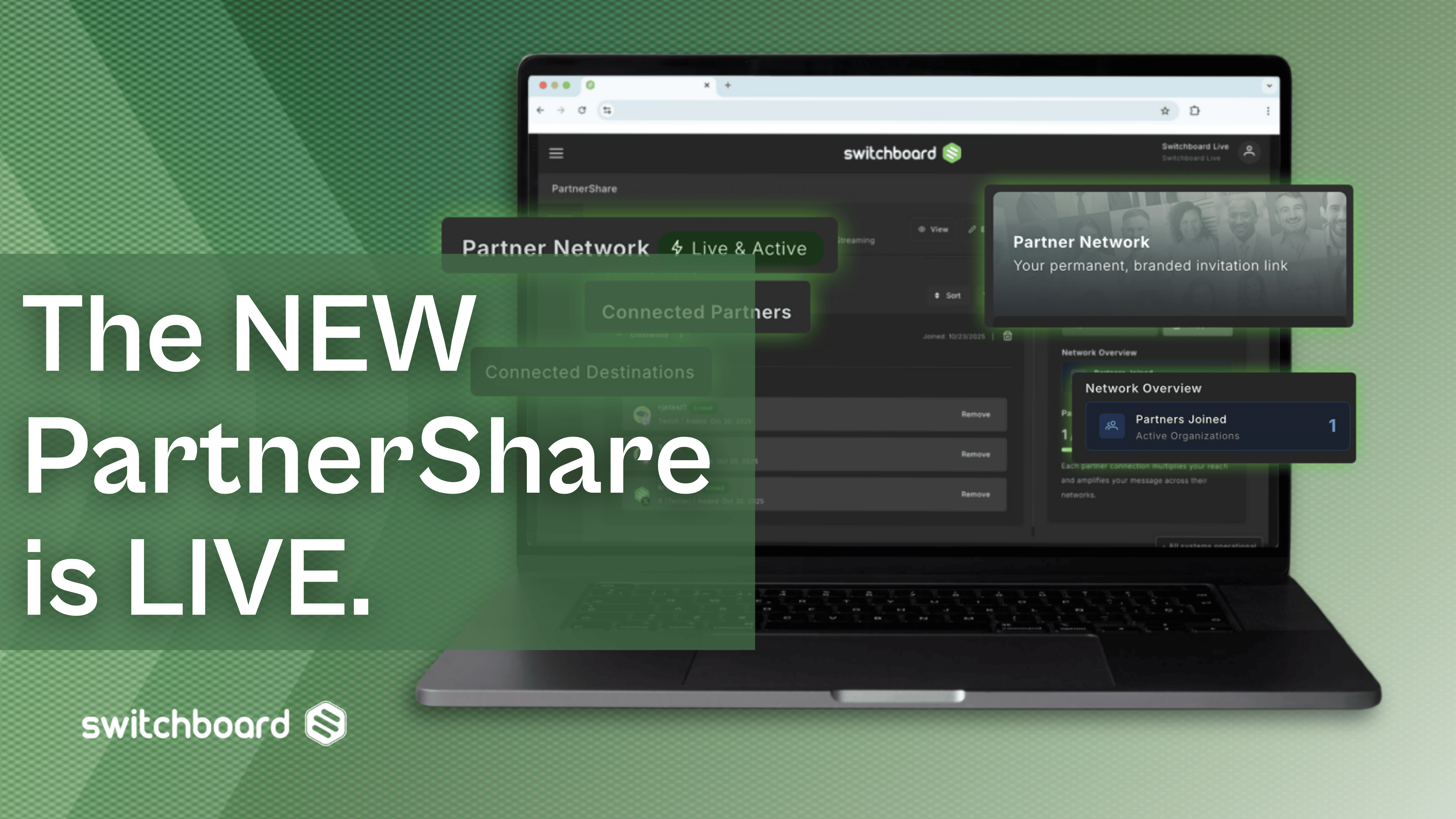Live video streaming probably conjures up images of entertainment. Maybe you think of watching your favorite gamer play Fortnite or your favorite band warm up for a concert. But businesses and brands have taken to live video streaming for their purposes as well. Corporate content marketers are launching products, giving interviews and promoting their services to a growing audience of potential customers — and those live streams are yielding real results.
But businesses are also live streaming for another reason — internal company communication. With employees working from home or offices around the world, live streaming can help businesses train employees, open up lines of communication and strengthen corporate culture.
Live video streaming makes it easy for presenters to share not only video of themselves but also presentations or documents. Unlike conference calls that are audio-only (and frequently bad audio quality at that) live streaming allows the participants a much higher quality experience and a much greater feeling of being in the same room with the presenter.
Business leaders can live stream their presentations to their own websites or to private YouTube channels or Facebook groups. Viewers can watch and interact with the live video right from the browser already on their computer or phone. There’s no confusing (and expensive) software to purchase and no technical requirements to bog down your IT department.
Using an easy-to-use multistreaming tool like Switchboard Live can enhance the experience even more. It allows companies to stream their live videos to multiple locations, websites and/or platforms all at the same time. This way, no matter where a participant is located they can join the live stream in the way that works best for them.
6 ways companies use live streaming internally
Training:
Whether you’re training on safety, HR policy, or new computer systems, live streaming video can be a very effective communication tool for team members in multiple locations. Team members located anywhere can not only watch a live training but interact with it too. Chat, voice and other two-way communication options are available on various live streaming platforms, allowing viewers to ask questions or even jump in and lead the conversations.
Meetings:
“Couldn’t this have been an email?” If you find yourself saying that after every meeting, perhaps live streaming can help. Rather than packing everyone in a conference room, or conducting the same meeting multiple times for smaller groups, you can live stream instead. It allows people to watch the presentation but still keep an eye on pressing matters like email or Slack messages.
Investor Relations:
A typical part of corporate life is communicating with and reporting to investors. Live streaming video allows companies to provide this critical communication in a low-cost way for both the company and investors. No longer do investors have to book flights and hotels to attend corporate meetings in person. With live video streaming, corporations can easily broadcast the meetings directly to the investor's desk — even if they’re on the other side of the country.
Building an ongoing resource base:
The best part of live video streaming — especially for training purposes — is it lives on afterwards. Video streams are typically saved and can be made available on-demand for anyone who missed the live stream. Employees who may have forgotten something from a meeting or a step in a training can go back and watch it again anytime they’d like. This on-demand access allows companies to create an entire catalog of internal video content that’s ripe and ready to go for new employees or employees who want to do some continued education. That can save corporations a lot of capital vs. conducting the same training with an in-person trainer over and over again.
Connect offices on a personal level:
All too often, companies with various satellite offices are disjointed and siloed. People in the corporate headquarters in New York probably don’t know the folks in the New Orleans office. By connecting live video between the locations, you can make everyone feel included no matter where they are located. Some companies even play fun games between locations to build morale, encourage teamwork and just blow off steam. Imagine a game of beer pong or flip cup where the New York office plays the New Orleans office via a live video stream? That’s sure to build morale and relationships.
Connecting franchisees or outside sales teams:
Whether your company uses a franchise model or an external sales team, communicating the latest goals and promotions from the top down can be challenging. With live video streaming these busy professionals out in the field can get the latest updates from the corporate office easily from wherever they happen to be at the time.
Livestreaming vs. Web Conferencing
While reading through these uses for live streaming internally you may think, “this sounds like something I can do with web conferencing software.” That may be true, but there are some distinct advantages to using live streaming over those services.
Your viewers don’t need special software to view the live video. Many web conferencing solutions require viewers to download special software, install it, then jump through hoops to connect to your live event. With live streaming, viewers can easily pull up the feed in their web browser on their computer or phone and simply start watching.
Live streaming is typically more cost-effective. Many web conferencing services charge per viewer or have limits on how many people can watch at the same time. Live streaming has none of those limits or fees. With live streaming, the low costs to go live for five, 100 or even 1,000 live viewers is the same.
Another reason to choose live streaming over web conferencing tools is that you as a host or presenter have much greater options to control the look of your video feed. Web conferencing tools are very basic but live streaming solutions can produce TV-quality video. You can easily create split screens, display multiple cameras, mix multiple audio sources and add high-quality graphics throughout the feed.
Now it’s your turn
Next time you’ve got an all-hands meeting, large training event, or even an office happy hour, start a live stream. It might just give your internal communications a much-needed boost.




.png)
.png)
.png)





